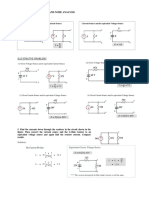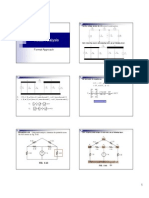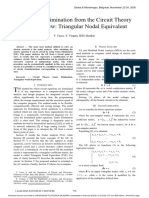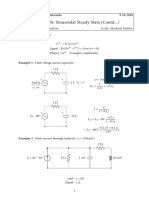0% found this document useful (0 votes)
107 views4 pagesConstant Current Source Circuit Analysis
1) Nodal analysis is used to determine voltages in constant current source circuits by writing and solving a system of linear equations involving node potentials.
2) The number of equations equals the total number of nodes minus one.
3) Branch conductances are determined using resistances. Nodal conductances are the sum of connecting branch conductances. Equations are written relating each node potential to connected potentials and branch currents based on the direction of the branches.
Uploaded by
Dimitrije1997Copyright
© © All Rights Reserved
We take content rights seriously. If you suspect this is your content, claim it here.
Available Formats
Download as DOCX, PDF, TXT or read online on Scribd
0% found this document useful (0 votes)
107 views4 pagesConstant Current Source Circuit Analysis
1) Nodal analysis is used to determine voltages in constant current source circuits by writing and solving a system of linear equations involving node potentials.
2) The number of equations equals the total number of nodes minus one.
3) Branch conductances are determined using resistances. Nodal conductances are the sum of connecting branch conductances. Equations are written relating each node potential to connected potentials and branch currents based on the direction of the branches.
Uploaded by
Dimitrije1997Copyright
© © All Rights Reserved
We take content rights seriously. If you suspect this is your content, claim it here.
Available Formats
Download as DOCX, PDF, TXT or read online on Scribd
/ 4





















































































